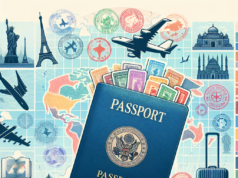
Australia’s visa policy has long been a topic of interest for potential migrants, international students, and skilled workers. As the nation continues to adapt to global changes and domestic needs, recent adjustments to its visa framework have sparked discussions and raised questions. This article delves into the historical context of Australia’s visa policy, highlights key changes for 2023, and explores the implications for various groups, including skilled migrants and international students.
Understanding the Evolution of Australia’s Visa Policy: A Historical Overview
Australia’s visa policy has undergone significant transformations since the post-World War II era, reflecting the country’s shifting economic needs and social attitudes. Initially, the policy was heavily influenced by the White Australia Policy, which restricted non-European immigration. However, the 1970s marked a turning point, as Australia began to embrace multiculturalism and diversify its immigration strategy. Over the decades, the introduction of various visa categories, such as skilled migration, family reunification, and humanitarian visas, has aimed to attract individuals who can contribute to the economy and society. The evolution of these policies has been shaped by economic demands, demographic changes, and international relations, leading to the complex visa landscape we see today.
Key Changes in Visa Categories: What You Need to Be Aware Of in 2023
In 2023, Australia has introduced several notable changes to its visa categories, aimed at streamlining the application process and addressing specific labor shortages. One of the most significant updates is the expansion of the Skilled Occupation List, which now includes additional professions in high demand, such as healthcare, technology, and engineering. Furthermore, the introduction of the new Temporary Skill Shortage (TSS) visa has made it easier for employers to sponsor skilled workers for short-term roles. Additionally, the government has increased the duration of certain visas, allowing migrants to stay longer and contribute to the Australian economy. These changes reflect a proactive approach to attracting talent and addressing workforce gaps across various sectors.
The Impact of Recent Policy Adjustments on Skilled Migration to Australia
The recent adjustments to Australia’s visa policy have profound implications for skilled migration. By broadening the Skilled Occupation List and simplifying the sponsorship process, the government aims to attract a more diverse pool of talent to fill critical roles in the economy. This shift is particularly important in light of the ongoing labor shortages exacerbated by the COVID-19 pandemic. Skilled migrants are now viewed as essential contributors to economic recovery, and the government is keen to facilitate their entry into the country. However, potential applicants must remain vigilant about the evolving criteria and ensure they meet the necessary qualifications to take advantage of these opportunities.
Navigating the New Visa Application Process: Essential Steps and Requirements
As Australia revamps its visa application process, it is crucial for prospective migrants to understand the essential steps and requirements involved. The first step is to determine the appropriate visa category based on individual circumstances, such as skills, qualifications, and intended duration of stay. Applicants must gather relevant documentation, including proof of qualifications, work experience, and English language proficiency. The application process has been digitized, allowing for online submissions, which can expedite processing times. However, applicants should be prepared for potential delays due to high demand and ensure that all information provided is accurate and complete to avoid complications.
Implications for International Students: Changes to Study and Work Visas
International students in Australia are also affected by the recent changes to visa policies, particularly concerning study and work visas. The government has introduced more flexible arrangements for student visas, allowing for part-time work during studies and extended post-study work rights for graduates in high-demand fields. This initiative aims to attract more international students to Australian institutions, enhancing the country’s reputation as a global education hub. However, students must remain aware of the specific conditions attached to their visas, including work hour limitations and the need to maintain satisfactory academic progress to retain their visa status.
Future Trends in Australia’s Visa Policy: Predictions and Expert Insights
Looking ahead, experts predict that Australia’s visa policy will continue to evolve in response to global trends and domestic needs. There is a growing emphasis on attracting skilled migrants who can contribute to innovation and economic growth, particularly in technology and healthcare sectors. Additionally, the government may explore more pathways for permanent residency for temporary visa holders, reflecting a shift towards long-term migration strategies. As Australia navigates the complexities of a post-pandemic world, ongoing consultations with industry stakeholders and community groups will be essential in shaping a visa policy that balances economic needs with social cohesion.
In conclusion, Australia’s visa policy is undergoing significant changes that reflect the country’s evolving economic landscape and demographic needs. As potential migrants, international students, and skilled workers navigate this new terrain, staying informed about the latest developments is crucial. By understanding the historical context, key changes, and implications of these policies, individuals can better prepare for their journey to Australia and contribute to the nation’s vibrant multicultural society.



























